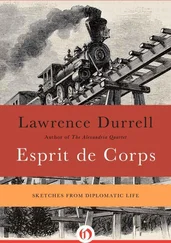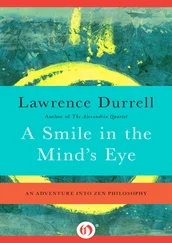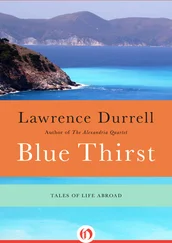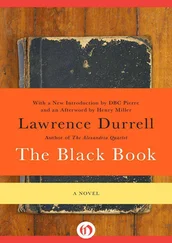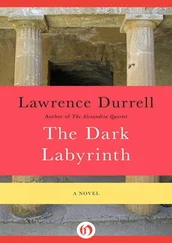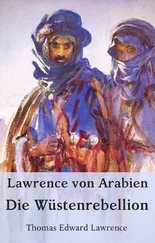Shamir was founded in 1944 by mainly Romanian immigrants who were members of the Marxist Zionist youth movement (whereas ‘Ras Shamir’, according to Aaron Stein, had existed for thirty years). In 1948 its co-ordinator of defence was a woman, Surika Braverman. If Durrell knew this, it may have prompted him to use the figure of Rebecca Peterson in confrontation with Major Towers before the Syrian attack. Although it was always vulnerable (and was the subject of Syrian assaults at a later date: for example, in 1974 three members of the kibbutz were killed during a terrorist raid), Kibbutz Shamir was not, in fact, attacked after British withdrawal in 1948, despite expectation that it would be one of the first kibbutzim to bear the brunt of any assault. Due to these expectations, the kibbutz was well fortified, on lines very similar to those depicted by Durrell in Judith . 74There is no record of Durrell having visited Kibbutz Shamir, although he was clearly aware of its significance. 75
The Nazi attempt to destroy European Jewry, the Holocaust, created the huge wave of immigrants, both during the 1930s and the world war and its aftermath, which made the crisis so acute. This was, of course, totally unexpected. ‘It was never conceived by the British Government that Palestine would of necessity become the country of refuge for hundreds of thousands, potentially millions of desperate Jewish refugees, of all ages and conditions, with no place else to go.’ 76But, as David Ben-Gurion wryly observed,
Had partition been carried out [before the Second World War], the history of our people would have been different and six million Jews in Europe would not have been killed — most of them would be in Israel.
77
The conditions in which these refugees travelled were indicative of both their determination to escape from persecution and their passionate desire to reach the new homeland. Tom Segev quotes the observations of one British officer watching the disembarkation of such a shipload:
They stepped ashore after long weeks of horrible crowding on the decks of barely serviceable vessels; the conditions were worse than on old-time slave ships…. Amazingly, he saw no misery among the passengers, only exultation. A strange light shone in their eyes. When the immigrants made out the cliffs of Mount Carmel and the blue mountains of Galilee, they would break out in song…ancient Hebrew melodies.
78
Durrell captures it well, when Judith assists at a disembarkation where she meets Grete Schiller:
Now Judith had the chance for the first time of witnessing the different reactions of these arrivals. Some had thrown themselves on the ground, others were laughing and crying, others kissing the wet sand. Most of the refugees were wearing on their backs all the clothes they possessed. (p. 72)
Durrell himself had witnessed scenes similar to what he describes in chapter 9 of Judith , ‘Operation “Welcome” ’, in which ships dodged the British blockade of the Palestine coastline in order to set ashore their illegal human cargo. In 1946 he and his second wife, Eve, had travelled on a Greek naval vessel as part of a rescue of refugees from a sunken ship:
Eight of the refugees had died when the ship had run aground and sunk, but some eight hundred had reached land and were spilled about under the moonlight in a natural amphitheatre. The sight had a weird, ghostly unreality. Larry and Eve spent the next morning ashore, monitoring radio transmissions and talking to the refugees.
79
One of the problems for assimilation of Jews into the state of Israel was the fact that they came from so many different backgrounds and cultures. Although Herzl had argued that the Jews were a cohesive entity for which the homeland would be provided (‘We are a people — one people’), 80it had equally been argued that ‘There is no Jewish race now as a homogenous whole’, and that a Jewish homeland in Palestine would be composed of ‘a polyglot, many-colored, heterogeneous collection of people of different civilizations and different ordinances and different traditions’. 81
The state, Israel, would be a home not to a homogeneous people but to disparate peoples from sixty or seventy countries (the number varies in Judith ), many of whom had no common language. As Amos Oz has written,
The Jews from ninety-six different countries of origin… shared a common literary, liturgical and cultural tradition [but]… One need spend only a couple of minutes on any street here to discover that there is no such thing as a Jewish race. Jews are not an ethnic group and the only unifying force is in their heads.
82
Durrell, alert to the pathos and the macabre humour of the situation, addresses this in Judith , when he has Rebecca Peterson say of a neighbouring settlement:
Tell them from me that they are just a bunch of Glasgow Jews thriving on the sharp practice they picked up from the Scots. Tell them, moreover, that we honest lowland Jews from Poland, Latvia, Russia and Brooklyn hold them in massive contempt. (p. 44)
And the places from which they have come provide the names of their settlements: Brisbane, Brooklyn, Odessa, Calcutta, Warsaw, Glasgow…. Durrell may also have borrowed something of the same sense of heterogeneity from A Chair for the Prophet (1959) by his third wife, Claude Vincendon:
How in Heaven’s name could they expect a national alchemy to fuse and homogenize in an already overflowing melting-pot — Germans and Russians, Spaniards and Englishmen, and the hordes of street-arabs?
83
In the late 1930s George Antonius pointed out a crucial defect in Arab self-promotion:
The Arabs have little of the skill, polyglottic ubiquity or financial resources which make Jewish propaganda so effective. The result is that, for a score of years or so, the world has been looking at Palestine mainly through Zionist spectacles and has unconsciously acquired the habit of reasoning on Zionist premises.
84
American support for Israel has, until recently, been unwavering and largely uncritical, 85and this has created a climate of public opinion in which the world has seen the Israelis as the ‘victims’ of history and the Arabs as the aggressors. Antonius went on to say that
The fact must be faced that the violence of the Arabs is the inevitable corollary of the moral violence done to them, and that it is not likely to cease, whatever the brutality of the repression, unless the moral violence itself were to cease.
86
Since it was impossible to persuade Arabs and Jews to sit at the same table for discussions, co-operation was out of the question, as was the long-term goal of a binational state. The manifest sympathy for the Jewish problem, precipitated by the revelation of the Holocaust, served to occlude the position of the Palestinian Arabs. The 1948 attempt by Syria, Lebanon, Jordan, Egypt and Iraq to stifle the infant state of Israel, followed by those of 1967 and 1973, reinforced the world’s view that Israel was a vulnerable state which deserved support. It was only with the recalcitrant move by hardliners in the Israeli invasion of Lebanon in 1978 that public opinion began to accept that there was a Palestinian side to the problem which had been neglected, perhaps because it had not been articulated as effectively as the Israeli side. As Amos Oz has said,
the wars we led in 1948, 1967 and 1973 were a matter of life and death. Had we lost those wars, Israel would not exist today. By contrast, the Lebanon War was optional… [it] was not a matter of life and death.
87
The intensity of mutual fear and repulsion is expressed graphically in two declarations: in 1928 Chaim Shalom Halevi said of the Arabs: ‘They hate us and they are right, because we hate them too, hate them with a deadly hatred’; 88while in 1944 the Nazi-oriented Grand Mufti of Jerusalem, Haj Amin al-Husseini, urged: ‘Arabs, rise as one man and fight for your sacred rights. Kill the Jews wherever you find them. This pleases God, history and religion’. 89Such expressions make explicit what is only slightly diminished by diplomatic manoeuvres such as the Camp David Accords engineered by President Jimmy Carter in 1978 between Egypt’s President Sadat and Israel’s Prime Minister Begin. Anyone who witnessed, during the Six Day War, King Hussein of Jordan saying of the Jews, ‘They will be our enemies until the end of time’ will appreciate not only the depth of Arab feeling but also the inevitable fact that reciprocal Jewish feeling would be expressed with equal force by Israeli statesmen such as Benjamin Netanyahu.
Читать дальше

